#Split Archaeological Museum in Split
Text
Split
The second largest city in Croatia, Split offers a wonderful mix of the old and the new, and is a good base for exploring the region. The heart of the tourist part of the city is the old town, which has grown from Diocletian’s Palace, built for the Roman emperor of the same name, in the 4th century. He was well known for his persecution of Christians, who got their revenge in the fifth century…

View On WordPress
#Bacvice Beach#Church and Convent of St. Francis#Church of the Holy Cross#Croatia#Croatian Maritime Museum#Diocletian’s Palace#Klis Fortress#Perlica#photography#Saint Domnius Cathedral#Salona#Split#Split Archaeological Museum in Split#Split Ethnographic Museum#St. Nicholas Church#the Riva#travel
1 note
·
View note
Text

Today's Flickr photo with the most hits: an oil lamp with gladiator decoration, seen in the Archaeological Museum of Split, Croatia.
32 notes
·
View notes
Text

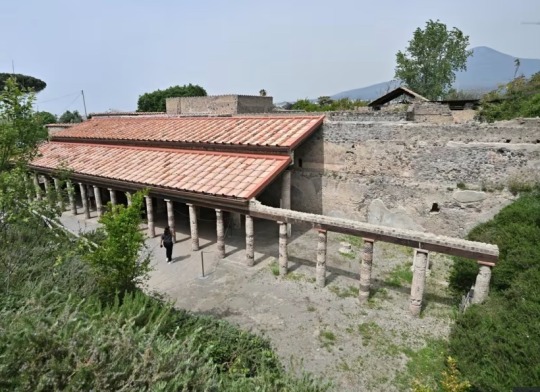
‘Ancient Roman’ Solar Roof Tiles Power Pompeii Villa
Ancient Roman ruins at Pompeii have been fitted with invisible solar panels, in a move that will contribute to the archaeological site’s sustainability efforts and cut costs. The innovative panels, which blend into the background by imitating traditional materials, were installed on the House of Cerere, on a thermopolium — a Roman snack bar — and on the House of the Vettii, which recently reopened following 20 years of restoration work.
“They look exactly like the terracotta tiles used by the Romans, but they produce the electricity that we need to light the frescoes,” said Gabriel Zuchtriegel, the director of the archaeological park of Pompeii, in a press release.
Each year, 3.5 million tourists explore the vast ruins of the ancient Roman city, which was buried by the eruption of Mount Vesuvius in 79 AD. But due to Pompeii’s size, energy bills are expensive and conventional methods of providing power across the site can threaten its appearance.

“Pompeii is an ancient city which in some spots is fully preserved,” Zuchtriegel said. “Since we needed an extensive lighting system, we could either keep consuming energy, leaving poles and cables around and disfiguring the landscape, or choose to respect it and save millions of euros.” The new technology will help the archaeological site to cut energy bills and make it more enjoyable, he added.
The invisible solar panels — or “traditional PV tiles” as they are technically known — were created by the Italian company Dyaqua. They can be designed to appear like stone, wood, concrete or brick, and hidden on walls, floors and roofs, according to Elisabetta Quagliato, whose family owns Dyaqua, in the press statement.
“We are an archaeological site but we also want to be a real-life lab for sustainability and the valorization of intangible heritage,” Zuchtriegel said. “Our initiative is not merely symbolic. Through the million tourists who visit us every year, we want to send a message to the world: cultural heritage can be managed differently and in a more sustainable way.”


Other locations in Italy using the invisible solar technology are the commune of Vicoforte in Italy and, soon, Rome’s contemporary art museum Maxxi. Public buildings in Evora, Portugal, and Split, Croatia will also install the panels, according to the press statement.
Pompeii’s recent use of these panels is just the beginning, Zuchtriegel said. “From now on, we will be taking this solution into account for all future renovation and restoration projects.”
By Garry Shaw.

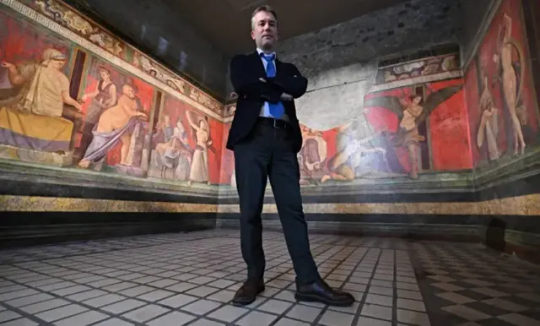
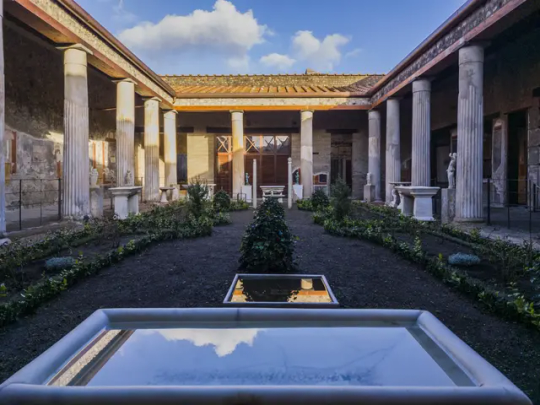
#‘Ancient Roman’ Solar Roof Tiles Power Pompeii Villa#House of Cerere#House of the Vettii#thermopolium#terracotta tiles#solar power#frescoes#mount vesuvius#ancient artifacts#archeology#archeolgst#history#history news#ancient history#ancient culture#ancient civilizations#roman history#roman empire#roman art
282 notes
·
View notes
Text
Season 2 final thoughts:
My apologies to my Psych mutuals, my hyperfixation took me on a trip to Hatchetfield and very soon it’ll be in cinderellas castle. It can’t be helped. I plan on finishing my rewatch, especially because I’m about to get into one of my favorite seasons, but it’ll probably be sporadic at best.
Here are my final thoughts on season 2!
This is the official season of lassie stumbling upon shawn and gus by happenstance. He does it in american duos, dis-lodged, black and tan, and im counting lassie standing in front of his pic at the museum. He can push them away as much as he wants but shawns like a boomerang.
I find it incredibly disrespectful that shawn and gus took credit for finding that dinosaur when that one guy literally died for it . Also im pretty sure it would be impossible for a t-rex to be discovered in california because it was all underwater at that time. But thats neither here nor there.
Shawn being a forgery/handwriting expert brings up a funny/depressing image of little shawn having to write lines but in different peoples handwritings
Shawn is an incredibly fast thinker! He saw this scene
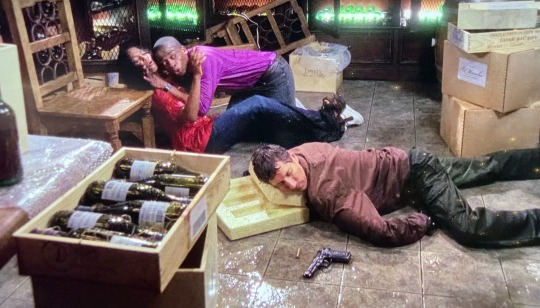
And not only deduced what actually happened, but also came up with a cover story for him at the same time.
Word of the day Abulic: abnormal lack of ability to act or to make decisions. Psych writers just casually dropped that little pearl in the middle of a scene in the finale
Overall it was a great season! Juliet got some more scenes, plus her character is beginning to get fleshed out, Gus was even funnier than i remembered, the heartfelt moments were very well acted especially by james who nailed the whole avoidant turmoil of it all. Henry, though, as ive stated in previous posts, is a lot harder to watch as a full fledged adult. He’s just such a prick to shawn any chance he can get. I’m so curious if I’ll be able to forgive him myself down the road. I mean, no wonder Shawn split when he turned 18 and hardly spoke to him again. Man, i wish we could’ve seen Shawn right after he left cause that is one juicy peach. He’d just be all angsty, jumping from one job to the next, getting fired or losing interest (or my personal headcanon is that his gifts of seeing everything kept getting him in some sort of trouble kind of like Poker Face (with natasha lyonne)).
Shawns add’l talents/ random knowledge:
-sketching
-forgery/ handwriting
-can operate a forklift (i think thats what it was lol)
-chess
-tango
-Spanish (honorable mention- he knows enough to speak it passably so i added it) and possibly Portuguese though i bet he just learned the one random phrase to try to trap jann
-acting
-airport codes
Gus niche interests:
-reality tv/ spanish soap operas
-archaeology
-legal tender
-santa barbara models/fashion
Rankings
The Blueberry Tier
American duos
Shawn (and gus) of the dead
Sixty five million years off
Black and tan: a crime of fashion
Nectarina Dulce Tier
Bounty hunters!
Lights, Camera, Homicidio!
Green Apple Jacks t-shirt tier
If you’re so smart then why are you dead
Rob a bye baby
Gus’ dad may have killed an old guy
Theres something about Mira
Did-lodged
And down the stretch comes murder
Psy vs. psy
Genocide of color Tier (somewhere a rainbow is weeping)
The old and the restless
Zero to murder in sixty seconds
Meat is murder…but murder is also murder
#psych#psych tv#psych rewatch#psych usa#shawn spencer#burton guster#shawn and gus#carlton lassiter#juliet o'hara#james roday rodriguez#james roday#dulé hill#dule hill#timothy omundson#maggie lawson#shassie#shules
29 notes
·
View notes
Text

Imagine going through a museum with your f/o(s)!
Say an art museum, do you look out for famous pieces? maybe while you stroll around, you comment about the various pieces. how about the two of you splitting up to find a work you'd know the other would like?
How about history museums? Are you two interested in perusing through them?
There's also science centere as well, think about those with large interactive sites! There are plenty of contraptions showing you the neat and wonderful way the world works.
Last but not least, archaeological museums? do you want to see some bones?
☁︎ proship/comship DNI ☁︎

#(まるでの夢)#ensemble stars#enstars yume#enstars self ship#self ship#selfshipping#imagine your f/o#f/o imagines#f/o community#f/o positivity#selfship imagines
23 notes
·
View notes
Text
Random Stuff #13: Cats in China--History (Part 1)
(Warning: Very long post ahead with multiple pictures!)
(Link to Part 2)
Since this topic is pretty big, I will split the content across 4 posts, but even then these posts will only be a shallow summary of the subject.
This small series of posts is dedicated to my fluffy quadrupedal friend, 小葱 (Little Green Onion).
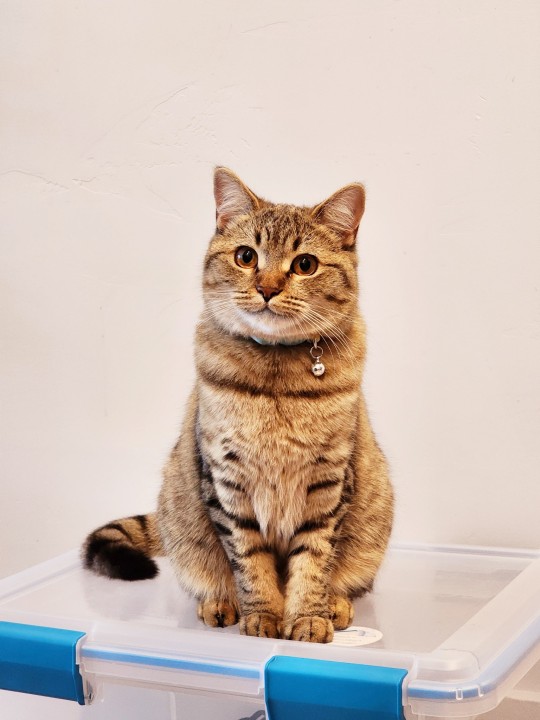
-------------------------------------------------
Did you know that there are over 200 cats in the Palace Museum/故宫博物院 in Beijing? Some of these cats were descendants of the pet cats of the imperial family hundreds of years ago, and some of these cats were simply strays, but they all found a home in the Palace Museum, and are now being fed and taken care of by the museum employees. You may even catch a glimpse of one of these cats during a visit to the museum.
Here are two of these cats, Jixiang/吉祥 (right; name means “auspicious”) and Ruyi/如意 (left; name means “(may things go) according to (one’s) wishes”)

Speaking of the Old Palace and royal kitties, cats actually have a fairly long history of being mousers and human companions in China, and sometimes they were even seen as powerful spirits to be both worshipped and feared.
Cats As Guardian Spirits
According to archaeological evidence, in China, cats came into people’s lives as early as 5300 years ago (~3300 BC). People of the Neolithic Yangshao Culture/仰韶文化 (~5000 - 3000 BC) in what is now central China grew millet, rice, and vegetables. These crops were bound to attract small rodents like mice and rats to human villages, which attracted wild cats in turn. There were no evidence showing that these wild cats had any sort of special or intimate bond with humans yet, so the relationship was likely a simple mutualistic relationship in which cats benefitted from having a steady source of prey, while humans benefitted from having their harvest protected from rodents. In the Book of Rites/《禮記》, a book detailing Zhou dynasty (1046 - 256 BC) etiquettes, administration, and ceremonial rites, there was a passage on the religious aspect of this mutualistic relationship:
“The wise and gentle rulers of yore will always repay the good deeds that others have done for them. Welcome the cats, for they are hunters of mice; welcome the tigers, for they are hunters of boars; welcome them and worship them”. (“古之君子,使之必報之。迎貓,為其食田鼠也;迎虎,為其食田豕也,迎而祭之也 。”)
-- Book of Rites, The Great Suburban Sacrificial Rites chapter (《禮記·郊特牲》).
As we can see in this short passage, people in ancient China regarded cats as spiritual beings--one of eight important animal spirits worshipped in the great ritual at the end of the year that must be performed by the ruler--and made offerings to them as a way to thank them for controlling rodent populations in the fields and protecting the year’s harvest.
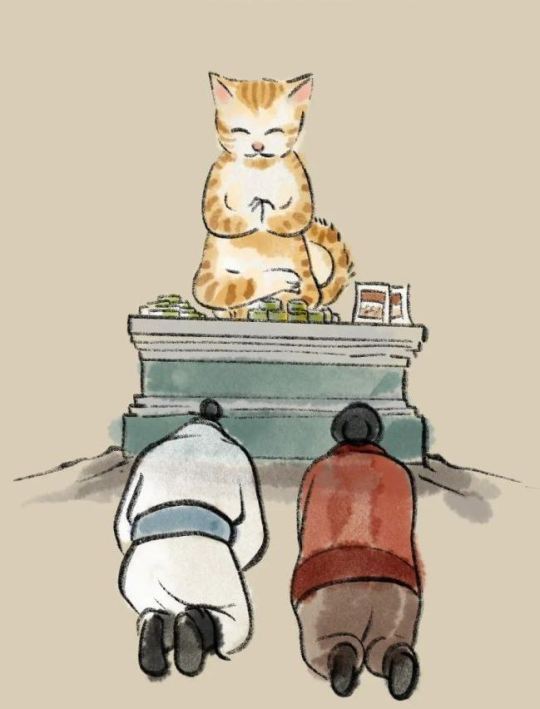
^ Illustration by 国馆 on Zhihu.
Cats as Evil Ghosts
In ancient folk belief, however, cats eventually became associated with wugu/巫蛊, which can be generally understood as “witchcraft” or “black magic”. Practitioners would sacrifice cats and keep “cat ghosts”/猫鬼, then send them out to curse whoever they wish to harm and steal money from. There was one famous case of this during Sui dynasty (581 - 618 AD) that was recorded in Book of Sui /《隋書》, the traditional official historical records of Sui dynasty that was completed in 636 AD. As the chapter “Consort Kin” (《隋書·外戚》) described, when Empress Dugu and Head of Secretariat Yang Su’s wife fell ill, the doctors diagnosed their illnesses as “caused by cat ghosts”. Emperor Wen of Sui/隋文帝 (personal name Yang Jian/楊堅) assumed that Dugu Tuo/獨孤陀 was behind the mysterious illnesses since Dugu Tuo was the paternal half-brother of Empress Dugu and his wife was the paternal half-sister of Yang Su, but Dugu Tuo denied having anything to do with it. So his household was questioned, and finally one of his housemaids confessed to be a practitioner of “witchcraft” and that she had cursed Empress Dugu and Yang Su’s family with her cat ghost under orders from Dugu Tuo. Dugu Tuo was stripped of all his titles along with his wife, and both were demoted to commoner status. So as we can see it was big enough in folk belief that it actually made its way into some imperial family drama. After this event, Emperor Wen of Sui declared a ban on these practices that were meant to cause harm to others.

^ A modern illustration of a “Cat ghost”, from the work titled Hundred Ghosts of China/《中国百鬼录》.
Cats in Analogies and Folklore
Cats have also been used in the classic cat-and-mouse analogies in different situations. During Wu Zetian/武則天’s ascent to power in Tang dynasty in 655 AD, she was involved in a power struggle with Empress Wang and Consort Xiao, and after some back-and-forths, Empress Wang and Consort Xiao were demoted to commoner status and imprisoned. Consort Xiao then cursed Wu Zetian, saying:
“May you become a mouse and I a cat, so I can choke you!” (”願阿武為老鼠,吾作貓兒,生生扼其喉!”)
-- Old Book of Tang, ”Empresses and Consorts Part 1”/《舊唐書· 后妃上》
Apparently after this happened, Wu Zetian banned cats from the palace out of fear.
Another example of this cat-and-mouse analogy was the memorial Su Shi/蘇軾 submitted to Emperor Shenzong of Song/宋神宗 (personal name Zhao Xu/趙頊) that argued against the parts of the reform proposed by Wang Anshi/王安石. This memorial was preserved and later named《上神宗皇帝書》. In it, Su Shi argued that government officials must be able to freely object another official’s proposal in order to prevent treacherous officials from gaining too much power with this analogy:
“We keep cats in order to keep mice at bay, but we cannot keep cats who can’t catch mice just because there are no mice around; we keep dogs in order to keep burglars away from our homes, but we cannot keep dogs that don’t bark just because there are no burglars around”. (”然而養貓所以去鼠,不可以無鼠而養不捕之貓。畜狗所以防奸,不可以無奸而畜不吠之狗”)
There weren’t only cat-and-mouse analogies, however. There's a short fable about cats and tigers that was passed down through the generations from at least Song dynasty all the way to the present day. Even I have heard of this story as a child. In this fable, the tiger was initially very clumsy, so the tiger asked a cat to teach it how to hunt. The cat agreed and taught the tiger how to track down, stalk, pounce, and play with prey, but refrained from teaching the tiger about tree-climbing. The tiger eventually mastered the art of hunting, and one day the tiger turned on its teacher, the cat, who then climbed atop a tree to save its own life. The moral of the story was either “never teach others everything you know, in case they use your knowledge against you”, or “never teach those who are ungrateful”, which resulted in the xiehouyu/歇后语 (a type of Chinese proverb) “cat teaching the tiger -- withhold some of your abilities” (“猫教老虎--留一手”). Of course, this fable doesn’t really stand in terms of scientific accuracy, seeing as tigers are proficient tree-climbers themselves, but the fable itself is still very interesting nonetheless. Although the origin of this fable has now faded into obscurity, the earliest record I could find was from the self-annotation on the poem “Mocking the Cats”/《嘲畜貓》 by the famous Song-era poet Lu You/陸游 in 1198 AD, which showed that this fable was already popular in folk culture in Southern Song dynasty:
“In folk belief cats were the uncles of tigers, they taught the tigers everything except how to climb trees”. (“俗言貓為虎舅,教虎百為惟不教上樹”)

^ Modern illustration of the fable, from children’s book The Tiger and the Cat by Eitaro Oshima.
Historical texts showed that at least from Southern and Northern dynasties (420 - 589 AD) and on, most people kept cats for their ability to catch mice, and oftentimes keeping cats as just house pets was something that was still limited to royalty, nobility, and rich people. But as we would see in Part 2, there were evidence from Song dynasty that showed a definite change in how cats were viewed in the ordinary household.
(Part 2 Here!)
264 notes
·
View notes
Text
When I was a kid, my mom was dealing with mental illness and fibromyalgia when people didn’t believe it existed, and my dad was something of a workaholic.
She quickly realized that summers would be hell unless she packed them with activities she had to do little to nothing to prepare for.
Sure, we did the summer camps and sports and 4H that most kids do, but I think my favorite thing she found for us was archaeology. She managed to find it advertised in our small town newspaper, and I’m so glad she did.
A professor of archaeology at a state university was concerned about planned development along a local river that was known to have held native villages. There really wasn’t enough manpower or money to do “official” digs.
So he found a fun solution: he organized an archaeological summer day camp for kids above like age 6 or so.
Each day we were dropped off at a school about 40 minutes from home with anything we could need in the field (literally) in those 1980s fanny packs and bagged lunches. He and his crew of summer interns had already sectioned off the spaces and started the process, preparing the site with official labeling methods and such. And we were split into teams, usually by age, with younger teams more closely supervised by interns. (Thankfully I was on a team without my siblings and with a close friend.)
Every day, one team stayed at the school with 1-2 interns to learn to catalog the artifacts already uncovered by different teams, carefully sorted by team and space. (If it was raining we all stayed and worked.)
Everyone else would bus to the field, hike through some undergrowth, and learn to gently trowel the layers of earth away, letting him take photos of each layer as we went, and sifted the dirt through screens for anything that was so small it may have been missed. We excavated fire pits and also found the remnants of wood poles that had once been the skeletons of structures. The sediment of the former was always bagged for further analysis by experts.
During every stage we were very carefully monitored and sometimes the professor would call for a halt and show us something cool another team had uncovered.
After being cataloged, the pieces were ultimately sent to the state museum for display or storage, always with the names of the team that found them.
My team found a tiny artifact through sifting that proved that the local native village had to have trade contacts in another state due to the material it was made of, and I remember this professor being super excited about it. We were even in the local paper over it—I have the article, which had my picture accompanying it.
At the end of each of the camp the 2 years I went, we were allowed to walk through a freshly planted farmer’s field and see if we spotted arrowheads or other artifacts that we were permitted to take home with us. (Since the ground was already disturbed and the cataloging would be difficult to impossible, I’d guess.)
I’ve never been to the museum to see if that tiny piece of history I helped uncover is on display, but I will always remember how much I learned from this camp.
In some other universe, one that branched off somewhere from this one, a version of me surely pursued archaeology as a career.
203 notes
·
View notes
Text

You people have no idea how difficult it is for me to not just fill this post with a bunch of pretty screenshots. I could have seriously just made this post five screenshots of pretty things with no comments. But I didn’t do that, I resisted the urge. The sacrifices I make for you people…

They actually showed a forest on its side on the raised arms, haha! Poor… bird? Poor bird having to hang on its side. Why, I feel almost as bad for it as I do for the people whose stuff are now either all Smash Into Pieces inside their upside down houses, or smashed to pieces at the bottom of the Boiling Sea after their house fell off the arm as it was rising.
But hey, they’re all alive! And with the castle gone, there’s at least some room to put up temporary housing while the remnants of the Construction Coven begin working on inventing apartment complexes.

…or they could make apartments out of the Archive House. Hey, Collector! I’ve got a new business idea! We’ll split the profits fairly: fifty percent to me, and we’ll share the rest, alright?

Steve’s back, baby!
My headcanon is that he’ll go on to work with Lilith at the Bonesborough Supernatural History Museum as her assistant and that they go on archaeological adventures together. They eventually create the comprehensive Boiling Isles History books series, fifteen volumes jam packed with information.
Where’s Hooty though?

Not Odalia just standing there looking sour skull emoji
Listen Momma Dalia, I know the people in the Archive House didn’t really get much to do this episode, but was there any reason why you didn’t do ANYTHING? If you had fled after Belos showed up, then that would have been understandable, but you obviously didn’t get very far.
9 notes
·
View notes
Note
Soooooooo....
Ahk and Kat...
Got any AU headcanons for if the both of them were the same age, either modern NYC or ancient Egypt?
oooh, interesting question! thank you!
Let's see... there is a bit later on in the story that can kinda be seen as what would happen if they met back in Ancient Egypt, but I can't say much more without it being super spoilery. But hey, just for funsies, here's some headcanons anyway:
Modern AU: Kat is still an art student at Pratt, and Ahk is studying Egyptology/archaeology at Cambridge. Let's say they really do have a partnership with the New York natural history museum, and so they run into each other at the museum one day: Katherine's drawing the exhibits for practice, and Ahk is wandering around killing time before he meets up with an instructor to look at the records. I'm envisioning Katherine in the Egypt exhibit, sitting on the floor and sketching (and thinking she's out of the way enough), and Ahk very nearly trips over her when he comes in. Cue rampant apologies and a tooth-rotting meet-cute.
And honestly... this might just be because I watched Love at First Sight recently and it's still turning around in my brain, but I'm thinking that they end up chatting but forget to exchange phone numbers before they have to split up. And Ahk doesn't use social media, so she can't track him down despite his rather distinct name. For a while, it seems like it's a lost cause, but then he comes sprinting up to her right as she's about to leave (or maybe this even happens a few days later, and he missed his flight to see her again). Adorable, heartwarming reunion, and they live happily ever after :)
Ancient Egypt AU: Ahk has just been crowned pharaoh, and he can't quite process it at first. Desperately needing a break from all the glamor and attention, he decides to slip out one day, dressed in ordinary clothes and giving away nothing that he's a pharaoh. He reasons that most of the people in the city haven't actually seen him up close, and wouldn't recognize his face. He doesn't think about the fact that rumors might be enough, and he's one of very few people in Kemet with blue eyes (I want to say the only one for ~narrative flair~ but chances are he wasn't given the gene evolved 6,000-10,000 years ago in Turkey and would likely have spread to Egypt by that time. Either way it would be rare.)
Anyway, he decides to walk around the markets for a little fresh air, and he runs into a young artist who's working hard to manage her stall in the market. She's younger than many of the other vendors, and a little overwhelmed by the flood of people. Ahk offers to help, and manages to keep the chaos to a minimum (and gets many of her pieces sold for her). It seems as though she doesn't recognize him, and it's a relief to be seen as an equal rather than an authority.
This is the part where it gets... tricky. Obviously I haven't quite decided where this might go since it's not an actual fic I'm writing, but I'm thinking he keeps coming back, "undercover", and helps her manage her stall until she gets her footing. After this? Who knows. All I know is that there would be a reveal that isn't actually a reveal (since Katherine recognized him from the moment they met, but chose not to spill anything), and eventually he'd court her and choose her as his bride even though his parents are pushing for a more diplomatic marriage. And of course, I'd write a way to get him away from Kahmunrah - maybe he's off helping Katherine when the assassination attempt is made, and instead of him being discreetly killed, they discover Kahmunrah as the intended murderer and put him away. Cue another happily-ever-after.
#my friends!!!#answered asks#my writing#my ocs#oc katherine johnson#who waits forever anyway? fic#night at the museum#natm 3#natm 2#natm#ahkmenrah#fanfic#ahkmenrah x oc#oc x canon
8 notes
·
View notes
Text

CHARACTER INFO:
Character name: Xanthos Haîma
Age & Birthday: 29 & 18th June 1953
Gender & Pronouns: Cis-Male & He/Him
Occupation: Wixen Historian/Assistant Ministry Ambassador for Greece
Blood Status: Pureblood
Previous House: House Hades (of Magisfalis Academy of Magical Arts)
Previous Affiliation: Neutral
Face Claim: Matthew Daddario
Xanthos is taken by Eoin
BIOGRAPHY:
Born into Greecian Nobility, Xanthos was afforded every luxury growing up. His father’s family were some of the most respected in the country and are considered experts in the rearing of elite magical creatures, specialising in Unicorns and Pegasi of all species. His mother’s family were considered foremost experts on Wixen history and oversaw several Wixen museums and magical archaeological endeavours worldwide. Thus, it was no surprise that these two topics became Xanthos loves in life. Growing up, he found that unicorns in particular seemed to like him and before even attending his schooling he knew all there was to know of breeding, raising and caring for them.
It wasn’t till he attended Magisfalis Academy (riding in on his own Unicorn named Achilles) that his love for Wixen history began to grow- learning where they came from was crucial to moving forward and avoiding the repetition of mistakes; at his status, one couldn’t afford to make mistakes. Despite the pressure, he remained an affable young man who could most often be found in the library or school forest rather than on the Quidditch pitch- though managing magical creatures was a far better workout than riding on a broomstick to his mind.
His parents were keen for him to begin making the correct connections and alongside starting school, he was forced to start writing to a pen pal in the United Kingdom. Through their own connections, his parents had him begin corresponding with Rabastan Lestrange- a boy his own age of a respected, though not titled, family. Far from enthusiastic, Xanthos nevertheless did his duty and, to both boys’ surprise, they formed a fast and long-lasting friendship, often spending summers at one another’s homes.
The connection turned out to be highly beneficial since, following his schooling, Xanthos became published for his historical studies and began training for a position as an ambassador to Britain’s Ministry of Magic. Throughout the Wixen War, Xanthos, and many other international Wixen, quietly withdrew until the dust settled and then promptly returned to their engagements. Currently, Xanthos splits his time between Greece and Britain, forging connections within the social elite of both communities, continuing his historical studies and ambassador duties and, should time permit, lending a hand to his father’s magical creature rearing.
1 note
·
View note
Text
Pinned Intro Post
I've got a link to Xanthos' bio HERE for folks to use :D

Or have a look below the cut for a full intro! :D
CHARACTER INFO:
Character name: Xanthos Haîma
Age & Birthday: 29 & 18th June 1953
Gender & Pronouns: Cis-Male & He/Him
Occupation: Wixen Historian/Assistant Ministry Ambassador for Greece
Blood Status: Pureblood
Previous House: House Hades (of Magisfalis Academy of Magical Arts)
Previous Affiliation: Neutral
Face Claim: Matthew Daddario
Password: Xanthos’ Patronus is a Unicorn
Anything Else?: Just as a note, I pulled from a Fanon Greecian Wixen school for Zagreus’ info, you can find the link to it HERE.
BIOGRAPHY:
Born into Greecian Nobility, Xanthos was afforded every luxury growing up. His father’s family were some of the most respected in the country and are considered experts in the rearing of elite magical creatures, specialising in Unicorns and Pegasi of all species. His mother’s family were considered foremost experts on Wixen history and oversaw several Wixen museums and magical archaeological endeavours worldwide. Thus, it was no surprise that these two topics became Xanthos loves in life. Growing up, he found that unicorns in particular seemed to like him and before even attending his schooling he knew all there was to know of breeding, raising and caring for them.
It wasn’t till he attended Magisfalis Academy (riding in on his own Unicorn named Achilles) that his love for Wixen history began to grow- learning where they came from was crucial to moving forward and avoiding the repetition of mistakes; at his status, one couldn’t afford to make mistakes. Despite the pressure, he remained an affable young man who could most often be found in the library or school forest rather than on the Quidditch pitch- though managing magical creatures was a far better workout than riding on a broomstick to his mind.
His parents were keen for him to begin making the correct connections and alongside starting school, he was forced to start writing to a pen pal in the United Kingdom. Through their own connections, his parents had him begin corresponding with Rabastan Lestrange- a boy his own age of a respected, though not titled, family. Far from enthusiastic, Xanthos nevertheless did his duty and, to both boys’ surprise, they formed a fast and long-lasting friendship, often spending summers at one another’s homes.
The connection turned out to be highly beneficial since, following his schooling, Xanthos became published for his historical studies and began training for a position as an ambassador to Britain’s Ministry of Magic. Throughout the Wixen War, Xanthos, and many other international Wixen, quietly withdrew until the dust settled and then promptly returned to their engagements. Currently, Xanthos splits his time between Greece and Britain, forging connections within the social elite of both communities, continuing his historical studies and ambassador duties and, should time permit, lending a hand to his father’s magical creature rearing.
0 notes
Text

Carrot Harvest Helped Metal Detectorist FindA Ancient Coins Hoard
When Alan Baxter found a medieval ring in a farmer's field he knew there could be more ancient artefacts nearby - but the stubble from the thick oat crop made it difficult for his metal detector to get anywhere near the ground. So he waited.
Four years later the farmer had planted and harvested carrots.
"It must have had a deep plough when the carrots got lifted and I could get my detector right to the soil," the 44-year-old said.
"Every 3ft I was getting a signal. I couldn't move, there was stuff everywhere.
"I didn't want to go home."
The highlight of his haul in 2022 was a hoard of farthings from the reign of 15th Century Scottish King James III.
"I got my first one and I knew it was really rare because I know my coins," he said.
"After that it was just like a tap, it just kept on going, and over the course of a few weeks I pulled 52 of them."

The 500-year-old coins, which were made of copper and were worth a quarter of a penny, were in very good condition, Mr Baxter, from Falkirk, said.
The coins are irregular shapes. They have the Saltire - the cross of St Andrew - on one side and a crown on the other.
"To hold something that's hundreds of years old for the first time is extraordinary," he said.
"You get a real buzz going up and down your body which lasts all day and all night."
An expert at the National Museum of Scotland said it was the first hoard of James III farthings to be found since 1919.
Metal detectorists need to ask for permission from landowners to search on their land and anything they find must be handed into the Treasure Trove for analysis and recording.
Under Scottish law all finds of archaeological, historical or cultural significance must be reported and can be claimed by the Crown.
Neither detectorists nor landowners have ownership rights to any archaeological finds made in Scotland.
Finds that are allocated to a museum through the Treasure Trove system are usually acknowledged by an award paid to the detectorist.
Detectorists generally split the money with the landowner.
Mr Baxter has detected at many sites, all of which he keeps a closely guarded secret. They include the 14-acre fields in Fife where he has now found more than 500 pieces ranging from the Bronze Age to the medieval period.

"I go along to farmers' doors with my portfolio of previous finds and show them what I do and ask them for permission to detect on their land," he said.
"You try to make yourself presentable, you put gel in your hair and wash your car and turn up in nice clothes.
"I hate getting permission because it's quite awkward speaking to the landowner. Farmers are busy and the last thing they want to do is speak to a wee guy asking for metal detecting permission."
The James III hoard has been put into the British numismatics journal, which charts the best finds in the country.
It also includes two Balliol coins which Mr Baxter discovered at the site in Fife. These farthings are extremely rare and are the only two to have ever been found in Scotland.
John Balliol reigned as king of Scotland from 1292 to 1296.
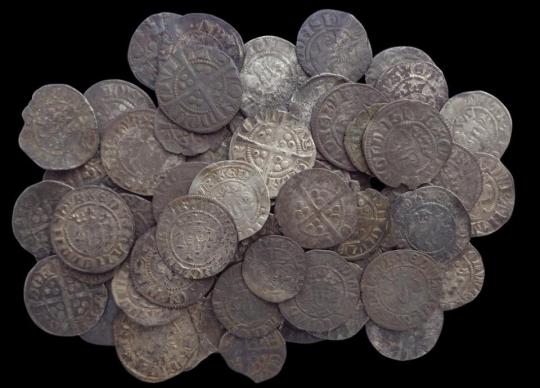

The find was allocated to the National Museums of Scotland and £5,000 was paid out.
Mr Baxter has also found 69 medieval coins from the reign of English King Edward I, whose armies invaded Scotland at the end of the 13th Century.
The medieval ring, which was his first find on the Fife site, dates between the 13th and 14th century.
"Initially I thought it was a bottle top because when it came out of the ground I could see the silver edges," Mr Baxter said.
"I saw the writing at the side and the big clasped hands at the front and I thought: 'That's a medieval ring'.
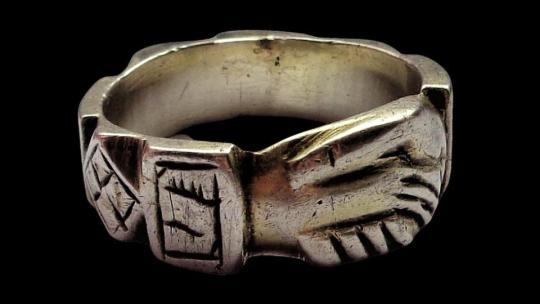
"It was just a great feeling to see it because it was a sunny day and it was twinkling away and it was in really good condition because it's been coated in gold, which has protected it from the soil."
Mr Baxter, who works as a lab technician, said he believed it was a betrothal ring.
"It would have been a higher status individual who owned it," he said.
"It weighs 9.5g, it's a heavy piece. A medieval penny would weigh about 1.2g, so that's about seven medieval pennies, so it wouldn't have been a peasant who owned that at the time."
The ring is silver but it has been coated in gold. It was eight inches down in the ground when his detector picked it up.
Mr Baxter, who has written a book entitled Making history: My Life As a Scottish Metal Detectorist, said it was hard for people to understand how difficult it was to find ancient artefacts.
He said: "In a general field 90% of the time there will be nothing in it.
"You could go in all the fields on the right and left along the M9 from Falkirk to Edinburgh and there would be nothing in them apart from modern Victorian stuff or Georgian stuff.
"It's hard to get stuff that's beyond 500 and 600 years old because the population was a lot lower."
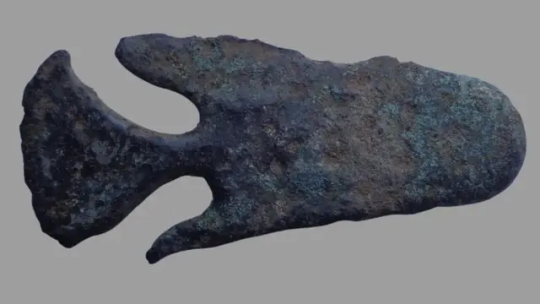
Mr Baxter said a field could be full of medieval items, but detectors were not going to find them if the crops were too high.
"Then it comes down to knowledge and the best conditions," he said.
"You need to know that the crops need to be soft cut.
"Barley and wheat is softer than oats. When oats get cut the stubble is really hard.
"And obviously the carrot harvest was the best."
By Angie Brown.

#Carrot Harvest Helped Metal Detectorist FindA Ancient Coins Hoard#Alan Baxter#Scottish King James III#coin hoard#coin collecting#hoard of farthings#metal detecting#ancient artifacts#archeology#archeolgst#history#history news#ancient history#ancient culture#ancient civilizations#medieval#middle ages#dark ages
58 notes
·
View notes
Text
Exploring the Wonders of Kochi with Cochin Car Rental Services
Kochi, also known as Cochin, is a vibrant city on the southwest coast of India, known for its rich history, cultural diversity, and stunning landscapes. Whether you're a tourist exploring the backwaters and historic sites, or a local looking for convenient transportation, Cochin car rental services provide an excellent way to navigate the city with ease and comfort. In this blog, we'll explore the benefits of renting a car in Cochin and highlight some top attractions you can visit.
Why Choose Car Rental in Cochin?
1. Convenience and Flexibility Renting a car in Cochin offers unparalleled convenience and flexibility. You can plan your itinerary without being constrained by public transportation schedules or the availability of taxis. Whether you're planning a day trip to the nearby hill stations or exploring the city’s numerous attractions, having a car at your disposal allows you to travel at your own pace.
2. Comfort and Privacy Traveling in a rental car provides comfort and privacy that public transportation simply cannot match. You can enjoy air-conditioned rides, spacious seating, and the freedom to take breaks whenever you need. This is especially beneficial for families with children or elderly members who may require more comfort during travel.
3. Cost-Effective for Groups For group travelers, renting a car can be more cost-effective than using multiple taxis or relying on ride-sharing services. Splitting the rental cost among friends or family can make it an economical choice while providing the added benefit of traveling together.
Top Attractions to Visit with a Rental Car in Cochin
1. Fort Kochi Fort Kochi is a historical neighborhood that offers a glimpse into the colonial past of the city. With your rental car, you can easily visit popular sites such as the Chinese Fishing Nets, St. Francis Church, and the Dutch Palace. Don't forget to explore the charming streets lined with colonial-era buildings, art galleries, and quaint cafes.
2. Mattancherry Palace Also known as the Dutch Palace, Mattancherry Palace is a must-visit for history enthusiasts. The palace features stunning murals depicting scenes from the Ramayana and other legends, along with a collection of royal artifacts. Having a car allows you to explore this area and nearby attractions at your own pace.
3. Marine Drive Marine Drive is a picturesque promenade that offers stunning views of the backwaters and the Kochi Harbour. It's a great place for an evening stroll, and with a rental car, you can easily reach other nearby attractions such as the Rainbow Bridge and the Marine Walkway.
4. Cherai Beach A short drive from the city, Cherai Beach is known for its clean sands and tranquil waters. It’s an ideal spot for a relaxing day out, and having a rental car makes the trip convenient and enjoyable. You can also explore nearby villages and try local seafood delicacies.
5. Hill Palace Museum Located in Tripunithura, a short drive from Kochi, the Hill Palace Museum is the largest archaeological museum in Kerala. It was the official residence of the Kochi royal family and now houses a vast collection of artifacts, including royal furniture, paintings, and sculptures.
Tips for Renting a Car in Cochin
1. Choose the Right Vehicle Depending on your travel needs, select a vehicle that offers the best balance of comfort, space, and fuel efficiency. For city travel, a compact car might be ideal, while larger groups might prefer an SUV or a luxury van.
2. Check for Inclusions When booking a rental car, ensure that the rental package includes essential features such as GPS, insurance, and roadside assistance. This can save you from unexpected expenses and provide peace of mind during your trip.
3. Plan Your Routes Familiarize yourself with the routes and traffic conditions in Cochin. Using navigation apps can help you find the best routes and avoid congestion during peak hours.
4. Understand the Rental Policies Read the rental agreement carefully to understand the terms and conditions, including fuel policy, mileage limits, and any additional charges. Clear any doubts with the rental provider before confirming your booking.
Conclusion
Cochin car rental services offer a convenient, comfortable, and flexible way to explore the beautiful city of Kochi and its surroundings. Whether you're visiting historical sites, enjoying the beach, or exploring the backwaters, having a rental car enhances your travel experience and allows you to make the most of your time in this enchanting city. So, the next time you plan a trip to Kochi, consider renting a car and enjoy the freedom to explore at your own pace.
Happy travels!
#Cochin Car Rental#Self drive car rental#Rent a car in Trivandrum#Self Drive Cars in Trivandrum#Car Rental in Kozhikode#self drive car rental Trivandrum
0 notes
Text

“FORTUNE AND GLORY, KID. FORTUNE AND GLORY.”
INTRODUCING…
NAME: Kaia Adrian Saylor Waverly
GENDER & PREFERRED PRONOUNS: Cis woman {She/Her}
AGE: 27
BIRTHDAY: August 25, 1996
ZODIAC: Virgo Sun, Leo Moon, Libra Rising
SEXUALITY: Bisexual
FACE CLAIM: Madelyn Cline
LABEL: The Wave Babe / The Loveable Rogue
OCCUPATION: Treasure Hunter / Surf Instructor
CURRENT RESIDENCE: The Coast/Pier; Merrock, ME. ( bungalow )
CHARACTER PLAYLIST: HERE.
↪ UP NEXT: “I AM NOT A WOMAN, I AM A GOD” BY HALSEY
BIOGRAPHY: TW PASSIVE NEGLECT
For as long as Kaia could remember, she was living a double-life. Originally from Avalon, CA - the girl was always split from her mother's condo in Sydney AUS, and her father's shack in Tamarindo CR. Whilst with her mother, Kaia's days were filled with spa treatments and art galleries. With her father, Kaia was always fighting against his job for his attention. The only times she's genuinely "won" was when the activity took them to the shore.
It was through her father that Kaia learned how to dive and boat; also gaining vast knowledge of the ocean and its inhabitants. The love for the water grew to be a constant in both places; both her parents loving to surf. It was amusing to her, that the one thing that ever brought her parents together was the only thing that made her feel centered; like she could breathe.
It was high school when her father ultimately stopped with the beach trips. His job just fully took over, but there was a rift that grew between them. As Kaia grew up, she started to see the extremely hard-to-reach side of her father that drove her mother away; the expectations too high for Kaia to reach in order to gain any sort of attention from him. By the time she graduated high school with high honors, she was used to her father not showing up. He didn't care for her full ride scholarships, or that prestigious colleges wanted her.
Instead of cutting ties and giving up like her mother did, Kaia tried to reach him by delving deep into his work. It was so much so, that she specialized in marine archaeology as well as oceanography in her studies. It was through her research for her thesis, when she stumbled upon a forum regarding an old map for Pirate Benito Bonito's treasure in Cocos Island. Her thesis then surrounding the lost treasure. Maybe it was how her father scoffed, or maybe it was the discouragement from her preceptor that really had her drilling her life into solving the mystery after all. What was taking years for experts, only took Kaia about two weeks to solve and track down.
The amazing part wasn't having earned her father's attention or proving anyone wrong. It wasn't even how other doors began opening up for her in Costa Rica due to donating the treasure to the CR National Historic Society and Museum. It was the thrill and how similar solving the mystery was to how Kaia could breathe on a surfboard.
Since then, Kaia has been accepting quests from the wealthy, only to turn around and give it all to the museums and researchers. Recently, Kaia was caught straying from the original plan and running off with an artifact she feels is the key to a map she's been separated from. Due to this, she has been on the run and has decided to lay low in Merrock; taking on a cover job and assimilating to the small beach town way of life, to keep up the charade.
EXTRA-EXTRA, READ ALL ABOUT HER!
Kaia is extremely fortunate in the fact that she has dumb luck. It's usually this dumb luck that helps her get out of last-second obstacles. Kaia is also good with thinking outside the box; this makes her able to catch onto things that many others may not have thought about, or quickly brushed over. Another aspect that helps her with her line of work is that she knows a little about a lot; Kaia grew up with the ability to quickly get the hang of a new skill or activity, and thus she was easily bored - but, due to this she knows a wide range of info at a scale that can pertain to numerous topics. She's athletic, having had her fair share in sports growing up; soccer, volleyball, softball along with surfing and dance. She's always looking for new experiences and adventures, and is definitely someone who holds some pretty interesting stories. Kaia can easily build connections with others, but is used to keeping people at an arm's length due to the dangers of her job as well as the constant traveling. Her main goal in life is to experience and learn as much as she can about the world around her; as well as just to have fun and live every moment to the fullest. Kaia is super impulsive with her decisions, and this is due to the fact she is easily bored. She has good intentions, but is honestly chaotic in her actions. Is secretive by nature, and good at calling another's bluff; though she doesn't give the impression she's being secretive. Just overall, very fun-loving and here for a good time; always a 'why not?' type of vibe. She's just got her guard up cause of her past with her dad as well as her job.
PERSONALITY:
+ Adroit, Enthralling, and Apolaustic
- Enigmatic, Mercurial, and Impetuous
0 notes
Text
What Are the 2 Best Greek Islands to Visit?
When planning a trip to Greece, the multitude of enchanting islands can make it challenging to choose where to go. Each island boasts its own unique charm, history, and natural beauty. However, two islands stand out as the ultimate destinations for travelers seeking both relaxation and adventure: Santorini and Crete. In this comprehensive guide, we will delve into the myriad of reasons why these islands are the best choices for your Greek island getaway.
Santorini: The Jewel of the Aegean Sea
Breathtaking Scenery and Iconic Views
Santorini, with its stunning caldera views, is undoubtedly one of the most picturesque places on Earth. The island's dramatic cliffs, formed by a volcanic eruption centuries ago, offer breathtaking panoramas of the sparkling Aegean Sea. The white-washed buildings with their blue-domed roofs in towns like Oia and Fira create a striking contrast against the deep blue waters, making it a photographer’s paradise.

Luxurious Accommodations and World-Class Cuisine
Santorini is synonymous with luxury. The island is home to numerous high-end hotels and resorts that provide guests with unparalleled comfort and exceptional service. Many accommodations offer infinity pools with caldera views, private terraces, and gourmet dining options.
The culinary scene in Santorini is equally impressive. The island's fertile volcanic soil produces some of the best wines in Greece, and the local cuisine features fresh, delicious ingredients. Be sure to try fava me koukia, a traditional dish made from yellow split peas, and sample the island's famous Assyrtiko wine.
Romantic Sunsets and Cultural Richness
Santorini is renowned for its spectacular sunsets. The village of Oia is particularly famous for its sunset views, drawing crowds every evening. For a more serene experience, consider watching the sunset from Imerovigli or Akrotiri.

Culturally, Santorini offers a wealth of experiences. Visit the ancient ruins of Akrotiri, often referred to as the "Minoan Pompeii," or explore the Museum of Prehistoric Thera to learn about the island's fascinating history. The blend of stunning landscapes and rich cultural heritage makes Santorini a top choice for travelers.
Crete: The Island of Myths and Legends
Diverse Landscapes and Outdoor Adventures
Crete, the largest of the Greek islands, is a destination that offers a diverse range of landscapes. From the rugged mountains of the White Mountains to the pristine beaches of Elafonissi and Balos, Crete's natural beauty is unparalleled. The island is a haven for outdoor enthusiasts, offering activities such as hiking the Samaria Gorge, exploring hidden coves, and diving in crystal-clear waters.

Rich History and Archaeological Sites
Crete is steeped in history and mythology. It is the birthplace of Zeus, the king of the Greek gods, and home to the Minoan civilization, one of the earliest advanced civilizations in Europe. The Palace of Knossos, located near the island’s capital, Heraklion, is a must-visit. This ancient site, associated with the legend of the Minotaur and the labyrinth, provides a fascinating glimpse into Minoan culture.
Authentic Cretan Culture and Cuisine
Crete's culture is deeply rooted in tradition, with a vibrant local music scene, traditional dances, and numerous festivals celebrating the island's heritage. The island is also known for its hospitality; visitors are often welcomed with a shot of raki, a local spirit.
Cretan cuisine is a highlight of any visit. The island’s fertile plains produce an abundance of fresh vegetables, fruits, and olive oil. Traditional dishes like dakos (a Cretan rusk salad), moussaka, and kalitsounia (sweet cheese pastries) showcase the rich flavors of the region.
Picturesque Villages and Vibrant Cities
Crete offers a mix of charming villages and bustling cities. The town of Chania is famous for its Venetian harbor, narrow streets, and waterfront restaurants. Rethymno features a well-preserved old city with Ottoman and Venetian influences. For a more authentic experience, visit the village of Archanes, known for its wine production and traditional architecture.

Conclusion
Both Santorini and Crete offer unique experiences that make them the best Greek islands to visit. Santorini is captivated by its stunning scenery, luxurious accommodations, and romantic atmosphere, making it ideal for honeymooners and those seeking a relaxing getaway. Crete, with its diverse landscapes, rich history, and vibrant culture, is perfect for travelers looking for adventure and a deeper connection with Greek heritage.
When planning your trip to Greece, choosing between these two islands may be difficult, but each offers unforgettable experiences that will leave you yearning to return. Whether you prefer the iconic views of Santorini or the diverse attractions of Crete, your journey to these incredible destinations will be a highlight of your travels.
Website | Facebook | Instagram | Medium | Penzu | Behance.Net | Quora
0 notes
Text
Bristol Temple Meads: Where Iron Horses Meet History
Temple Meads in Bristol is more than just a railway station. It is a gateway to the city, a witness to history, and a place where the iron horses of the past meet the sleek trains of the present. From its grand Victorian beginnings to its modern-day buzz, Temple Meads has been a vital part of Bristol's fabric for over 170 years.
A Victorian Masterpiece
In 1840, Isambard Kingdom Brunel, the engineering genius behind the Great Western Railway, set his sights on Bristol. He envisioned a grand station that would be the western terminus of his revolutionary line. The result was Temple Meads, a magnificent Gothic Revival structure with soaring arches, stained glass windows, and a clock tower that dominated the Bristol skyline.

Brunel's vision wasn't just about aesthetics. He designed the station to be functional and efficient, with separate arrival and departure platforms, spacious waiting rooms, and even a hotel for weary travelers. Temple Meads quickly became a symbol of Bristol's prosperity and its role as a major center of trade and industry.
A Witness to Change
Throughout its history, Temple Meads has been a silent observer of countless historical events. From the arrival of the first locomotive in 1841 to the departure of troops during World War I and II, the station has echoed with the footsteps of soldiers, politicians, and ordinary people on their journeys.
In the 1960s, the station fell into decline as passenger numbers dwindled. The Beeching Axe, a program of railway closures, threatened to close Temple Meads altogether. However, a strong campaign by local residents saved the station, and in the 1980s, it began to experience a revival. Visitors can explore its rich heritage and even plan their journeys with Bristol Temple Meads tickets, connecting with the history that unfolded within its walls.
A Modern Hub
Today, Temple Meads is a bustling hub of activity. With over 17 million passengers passing through its doors each year, it is the busiest station in the southwest of England. The station has been extensively modernized, with new platforms, shops, and restaurants. However, it has also retained its Victorian charm, with the original Brunel building still standing proud in the heart of the station.
Temple Meads is more than just a place to catch a train. It is a meeting place, a cultural center, and a reminder of Bristol's rich history. From Brunel's daring vision to the modern-day bustle, Temple Meads continues to be a vital part of the city's life.
Beyond the Station
The area around Temple Meads is also worth exploring. The Brunel Way, a scenic walking and cycling path, follows the route of the Great Western Railway from Temple Meads to Bristol Docks. The path takes you past historic landmarks such as the SS Great Britain, the world's first passenger steamship, and the Bristol Guildhall, a medieval merchant's hall.
If you're looking for something to eat, there are plenty of cafes, pubs, and restaurants in the area. The nearby St George's Market is a great place to sample local produce and crafts. And if you're interested in art and culture, the Bristol Museum & Art Gallery and the Arnolfini arts center are both within walking distance. Additionally, for savvy travelers, exploring the option of split train tickets might be a useful tip to save on transportation costs in this vibrant city.
Here are some additional things to see and do around Temple Meads:
Visit the Bristol Museum & Art Gallery, which houses a collection of art and archaeology from around the world.
Take a walk along the Brunel Way, which follows the route of the Great Western Railway.
See a show at the Arnolfini arts center, which hosts a variety of performances and exhibitions.
Explore the Bristol Docks, which were once one of the busiest ports in the world.
Take a boat trip on the River Avon, which flows through the heart of Bristol.
Whether you're interested in history, culture, or simply looking for a great place to spend a day, Bristol Temple Meads is a great place to start. So next time you're in Bristol, be sure to make time to visit this iconic station and explore the surrounding area.
#split train tickets#split saving#bristol temple meads#bristol temple meads train tickets#bristol temple meads tickets
0 notes